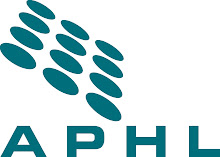Along with our partners, the public health laboratories are working to keep communities healthy. Laboratorians work behind the scenes. Public health laboratories serve as the nation’s early warning system for diseases and other health hazards. When health risks emerge or re-emerge, public health laboratories analyze the threat, provide the answers needed to mount an effective response and act to protect the public in collaboration with other decision makers. They protect our health by monitoring continuously for diseases and other health hazards.
Just a few of the things that laboratories are doing every day to make sure that you and your neighbors are healthy:
- Public health laboratories in every state are the backbone of our nation’s infectious disease surveillance networks. They are analyzing infectious diseases such as influenza to determine if they are changing and reporting this information to public health officials so they can determine effective prevention measures. [More on the Infectious Disease Program]
- More than 11,000 babies are screened daily for potentially life-threatening genetic and congenital disorders.
- Matt and Noelle Bamonte discovered that their seemingly healthy baby boy had PKU, a serious disorder that can cause brain damage if not treated from a very early age. Noelle is certain that without laboratory screening, her little boy would have been vastly different. Now, aside from a strict diet, he lives a normal life! [More of their story]
- In order to detect foodborne outbreaks and ultimately keep Americans safe from foodborne disease, public health laboratorians test human specimens and food samples for bacteria such as Salmonella and E. Coli.
- In 2006, the New Mexico public health laboratory pinpointed the exact source of the E. Coli that made its way into spinach and made hundreds of people sick. [More on the E.Coli outbreak]
- California scientists are collecting specimens from 2,000 people to test for the presence toxins used in used in industry, agriculture and the home. They’ll use this information to explore such things as the connection between exposure and diseases, and to examine changes in exposure over time and the connection to changing health policies and industry regulations working to reduce exposure. [More on the work in California]
- In 2008, severe flooding in Mason City, Iowa caused the closure of the water treatment facility. Residents were advised to boil their water until the system was restored and the water was tested to ensure it was safe to drink. The Hygienic Lab rose to the task and tested the water quickly bringing the treatment operation back online. [More on the floods in Iowa]
We would like to thank our unsung heroes in lab coats for protecting the public’s health – every day.





